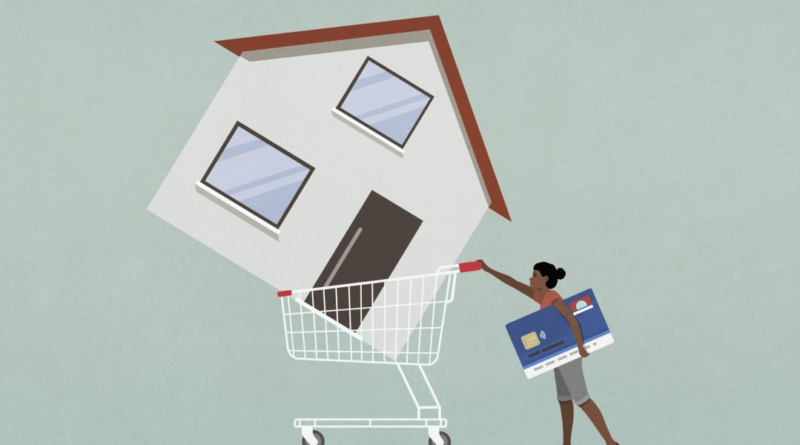Meet the housing market 'hackers' who do not live in their homes
Across America there’s a growing trend: people own homes, they just don’t live in them. Instead, tenants renting in expensive areas are buying cheaper properties as holiday homes, retirement nest eggs, or to bring in some extra cash.
The individuals Fortune spoke to said the choice to buy a house which isn’t their primary residence was pretty simple: they had a pot of savings and didn’t want to miss out on the returns promised by the housing sector.
After all, while the S&P500 tends to have an average return rate of around 10% a year, property comes with an average value increase of 5.4% annually and might have the added boon of rental or holiday letting income.
So individuals are choosing to bury their cash in property, even if they don’t have the benefit of that roof over their head.
Whether it was purchasing a smaller holiday home, buying a rental in need of some love, or even moving into the shed, there’s one thing everyone agreed on: the get-rich-quick property market America loves so much simply no longer exists.
I bought a run-down cabin in the mountains
For six months 36-year-old Allison Ullo cried weekly because the cabin she had bought in the Catskills was hemorrhaging cash.
The two-bed wooden property needed a complete refurbishment, meaning insurance was difficult to secure and handymen were hard to come by.
On top of that, New York-based Ullo lived two hours away and as a self-employed entrepreneur working two jobs and several side hustles, the burden was almost too much to bear.
With the help of her parents, Ullo turned the fortunes of the cabin around: replacing windows, repairing stoves and making the home habitable.
It’s now listed on Airbnb and is bringing in around $1,500 a month—enough to pay the mortgage and cover any other unforeseen issues.
The labor of love doesn’t just give Ullo a bolthole in the mountains, but also represents a retirement option and financial safe haven for the future: “Who knows what will happen but for me freedom is options,” she said.
“Having the option to either move and live there with no mortgage … or the option to sell off a property and make money so I can buy the retirement home of my dreams or use it as a salary that I’m going to live on, those options are what real freedom is.”
Ullo is now open to the idea of buying a second cabin, saying the renovation of her first—which she purchased for approximately $300,000—has inspired confidence.
Ullo—who has inspired a number of friends to go and buy their own cabins—said she’d prioritize buying another Catskills property over a New York apartment.
She explained: “I love the idea of owning land, when you buy in New York you’re getting a box in essence and unless you’re buying a building … you’re not getting any land with it.
“Part of what I was buying with the cabin was the property and land value, which was just as important as the house itself, if something were to happen to the house there’s multiple things you can still do with that land—if your apartment burns down that’s it.”
I live in Miami—my condo is in Brooklyn
Victoria Shannon didn’t want the commitment of buying a home in New York in 2022, but didn’t want to miss out on the housing boom either. So despite preparing to pack her bags and move to Miami the PR CEO put down a deposit on a new-build condo in Brooklyn, while still renting at the time.
Shannon didn’t want to live in the property in Flatbush herself but said crunching the numbers and evaluating the property appreciation in the area made the financial case clear.
“I really believe in real estate as a way to build long-term wealth,” the entrepreneur told Fortune. “It’s not supplementing my own rent but the property is paying for itself and helping me build equity.”
Eventually, the 34-year-old hopes to balance her work and personal life more evenly, having worked 24/7 to get her business off the ground.
Buying another two or three properties—perhaps even one to call home—forms part of that plan.
She said: “I plan to work as hard as I can for another 10 to 15 years and then I would like to have more freedom with my time. I see [property] as more of a long-term bet for retirement and to relieve the pressure of being self-employed, where everything feels like it’s on the line.”
The businesswoman added the purchase of her property—which was in the region of $400,000—had been relatively straightforward, advising potential buyers to search beyond the bad news across the industry for opportunities in certain areas.
When it comes to housing affordability the devil is in the detail and, like Shannon, some prospective buyers may have to go out of state to purchase a property.
For example, the Bureau of Economic Analysis found that Mississippi is the most affordable state to buy a home, followed by West Virginia, Arkansas, Alabama and Kentucky.
On the flip side, California is the least affordable, followed by Hawaii, New Jersey, New York and Colorado.
Across the board, data suggests that it is becoming increasingly impossible to buy a house in America.
According to the National Association of Realtors’ affordability index throughout 2023, it become increasingly difficult for families to be eligible for the qualifying income to buy a home.
In Oct. 2023, the latest set of data, the median family income in the U.S. was just over $99,000 while the qualifying earnings for a home needed to exceed $108,000—giving an index of 91.4.
We moved into the shed
Unlike other people Fortune spoke to, Julie Fornasero and her husband Tim Logan did once live in their 1,100-square-foot home in San Anselmo, California.
But when Tim’s sons decided to move out—one for college and the other for boarding school—the couple began to look at how they could live more flexibly to increase their income.
The idea was to build a modular home in the large garden and rent it out, but when the maths shook out it made more sense for the couple to rent out their own, larger home, and move into their Studio Shed.
Having moved into the 544-square-foot shed in 2018, Fornasero’s tenants—a mother and son—now pay the couple approximately $5,000 a month to live close to good schools.
It’s meant the owners—Fornasero, a property manager, and Logan, a tech consultant—are more secure financially and can enjoy a more flexible lifestyle.
The couple plans to live abroad for half the year, but looking into the long term see the modular home as an investment for their retirement. A live-in carer, for example, could live in the garden house if needed.
Fornasero said neither she nor her husband had ever felt uncomfortable with the idea of someone living in the home they still owned—it was a purely commercial decision: “We don’t have an attachment to the house … it’s allowed more financial freedom.”
That freedom has come at a cost, space, which is Fornasero’s main piece of advice to those thinking about making a similar change: “It’s a challenge to remain small, not to buy loads of stuff—it feels like you’re missing out because you have to buy smaller things. It’s not live within your means, it’s buy within your space.”
We lived in the basement
Ten years ago Suzanne Moore bought her first duplex in Portland, Oregon, while renting herself and has now built a portfolio of nearly 20 properties worth millions of dollars.
“I was paying $1,200 a month in rent and bought a duplex that was barely financeable,” said Moore. “It was $210,000 and needed a lot of work … we fixed up one of the units before the first mortgage payment was due, so we’ve never had to make a mortgage payment out of our pocket. As soon as we got the second unit up and running we had the passive income and that got us started.”
Moore has never bought a house purely to make it her home—even now technically ‘renting’ from her partner as they aren’t married—and has sometimes lived in the properties for a short period of time in order to secure better financing agreements.
Even when they did live in one of their houses, Moore and her partner ended up splitting the basement unit from the property and moving downstairs to bring in a higher rental income from the upstairs.
“It was my goal to be able to have an alternate retirement plan,” Moore said. “I wanted to generate some passive income to ultimately leave a corporate job. I worked in the fashion industry and every 18 months there’s a new round of layoffs, and I didn’t have to worry.
“I loved what I did but I didn’t have that sense of fear that I saw in my colleagues when those times would roll around. I never wanted to lose my job but I knew I had a backup, and that gave me a sense of freedom that I couldn’t put a value on.”
Younger generations are going to have to get used to thinking outside the box if they want to get on the housing ladder.
According to the NAR’s most recent Home Buyers and Sellers Generational Trends Report, the vast majority of property changing hands is between people in Gen X (people aged around 45) and above.
Moore highlighted that any would-be property magnates won’t be able to make a quick buck by holding onto a property and selling it with no work: “You don’t have to be wealthy or rich in order to get started, that’s a common misconception. But you have to be creative and willing to sacrifice your own comfort in order to do it.
“We lived in construction zones and moved a lot for six or seven years—it was a lot of work, we had our day job and in the evenings and weekends and holidays were building the foundation for our property business. The payoff was pretty fast and really sweet because now I have the freedom to set my own schedule and travel.”




